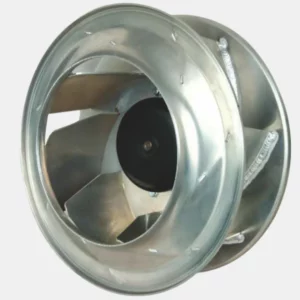The efficiency of a centrifugal dust extractor fan has a significant impact on its operating costs and lifecycle expenses. Here’s how:
- Energy Consumption: A more efficient centrifugal dust extractor fan consumes less energy to achieve the same level of airflow and dust extraction compared to less efficient fans. High-efficiency fans typically have advanced motor designs, optimized impeller geometries, and aerodynamic features that reduce energy losses and improve overall performance. Lower energy consumption translates into reduced electricity bills and operating costs over the fan’s lifecycle.
- Operating Hours: The efficiency of a centrifugal dust extractor fan affects its operating hours and duty cycle. In applications where the fan operates continuously or for extended periods, such as industrial dust collection systems or ventilation systems in manufacturing facilities, energy savings from improved efficiency can be substantial. Reduced energy consumption also lowers the wear and tear on fan components, extending the fan’s lifespan and reducing maintenance requirements.
- Maintenance Costs: High-efficiency centrifugal dust extractor fans typically require less frequent maintenance compared to less efficient fans. The reduced energy consumption and operating temperatures associated with efficient fan operation result in less stress on motor bearings, belts, and other mechanical components, leading to longer intervals between maintenance tasks such as lubrication, belt tensioning, and bearing replacements. Lower maintenance requirements contribute to reduced downtime, repair costs, and lifecycle expenses.
- Filter Life: The efficiency of a dust extractor fan impacts the performance and lifespan of the filtration system. Efficient fans maintain consistent airflow and static pressure levels across the filtration media, ensuring optimal dust capture and filtration efficiency. By preventing filter clogging, premature filter replacements, and pressure drop issues, efficient fan operation prolongs the lifespan of filters and reduces ongoing filter replacement costs.
- System Integration: High-efficiency centrifugal dust extractor fans can be integrated with advanced control systems, variable-speed drives, and monitoring technologies to further optimize performance and energy efficiency. By adjusting fan speed, airflow rates, and operating parameters in real-time based on dust levels, process conditions, or occupancy patterns, these integrated systems maximize dust extraction effectiveness while minimizing energy consumption and operating costs.
- Regulatory Compliance: Efficiency considerations may also impact compliance with environmental regulations, energy efficiency standards, and industry certifications. High-efficiency centrifugal dust extractor fans may meet or exceed requirements set forth by regulatory agencies, such as the U.S. Environmental Protection Agency (EPA), Occupational Safety and Health Administration (OSHA), or European Union directives. Compliance with energy efficiency standards and certification programs, such as ENERGY STAR or LEED, can enhance the marketability and sustainability of the fan system, reducing long-term liabilities and enhancing asset value.
In summary, the efficiency of a centrifugal dust extractor fan directly influences its operating costs and lifecycle expenses by affecting energy consumption, maintenance requirements, filter life, system integration, and regulatory compliance. Investing in a high-efficiency fan system can yield significant financial savings and operational benefits over the fan’s lifespan, making it a cost-effective and sustainable choice for dust extraction and ventilation applications in various industries.
